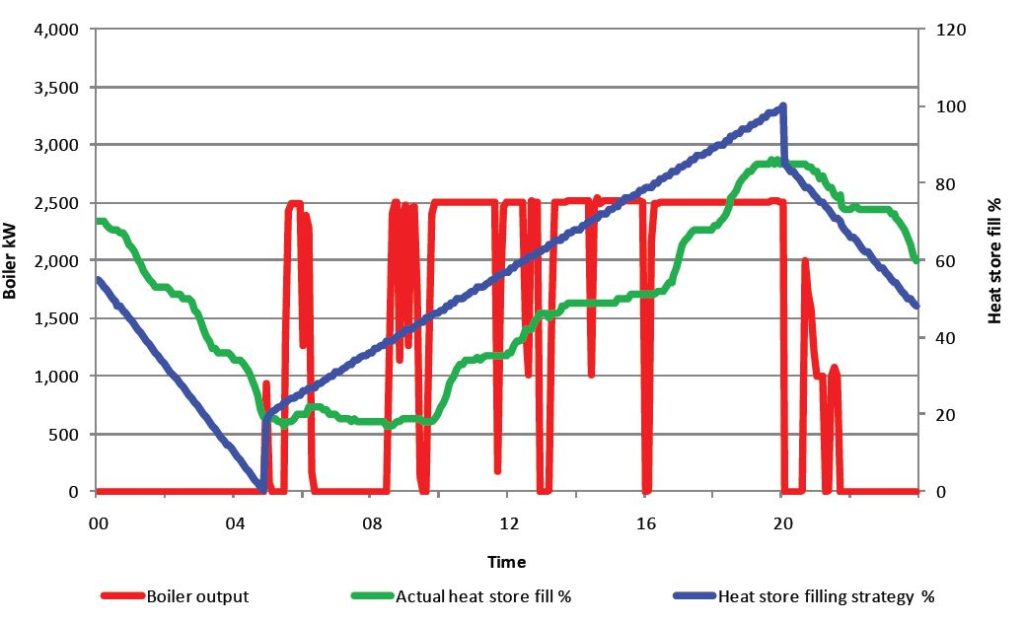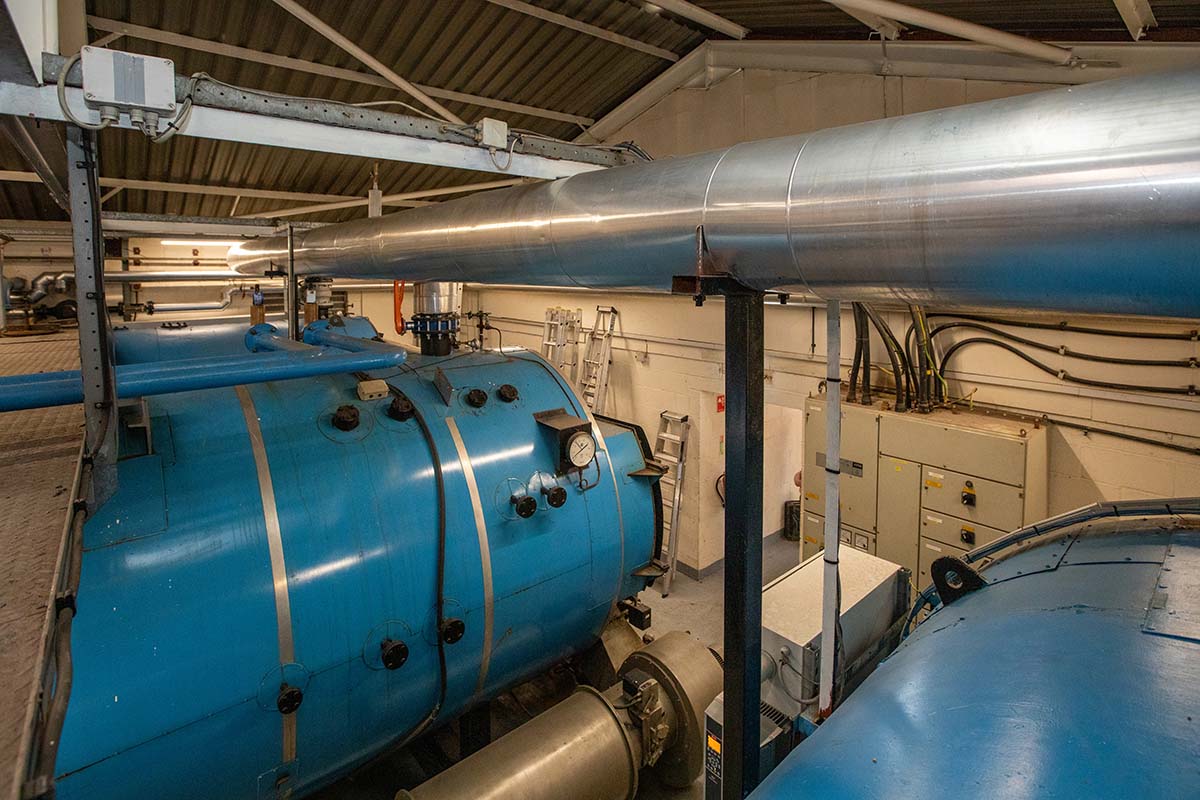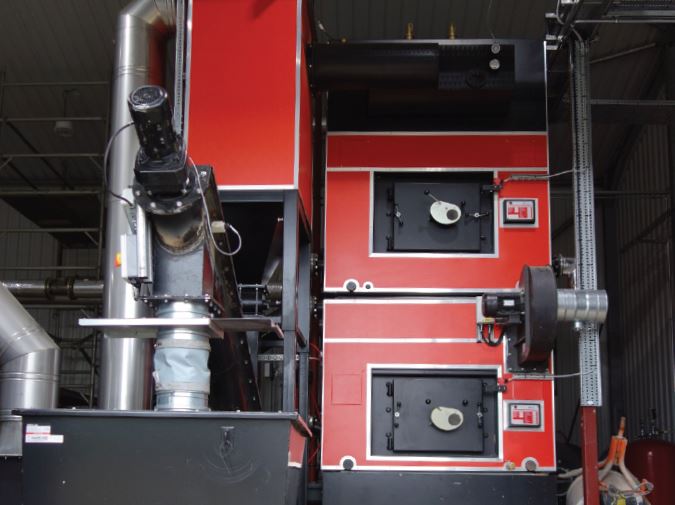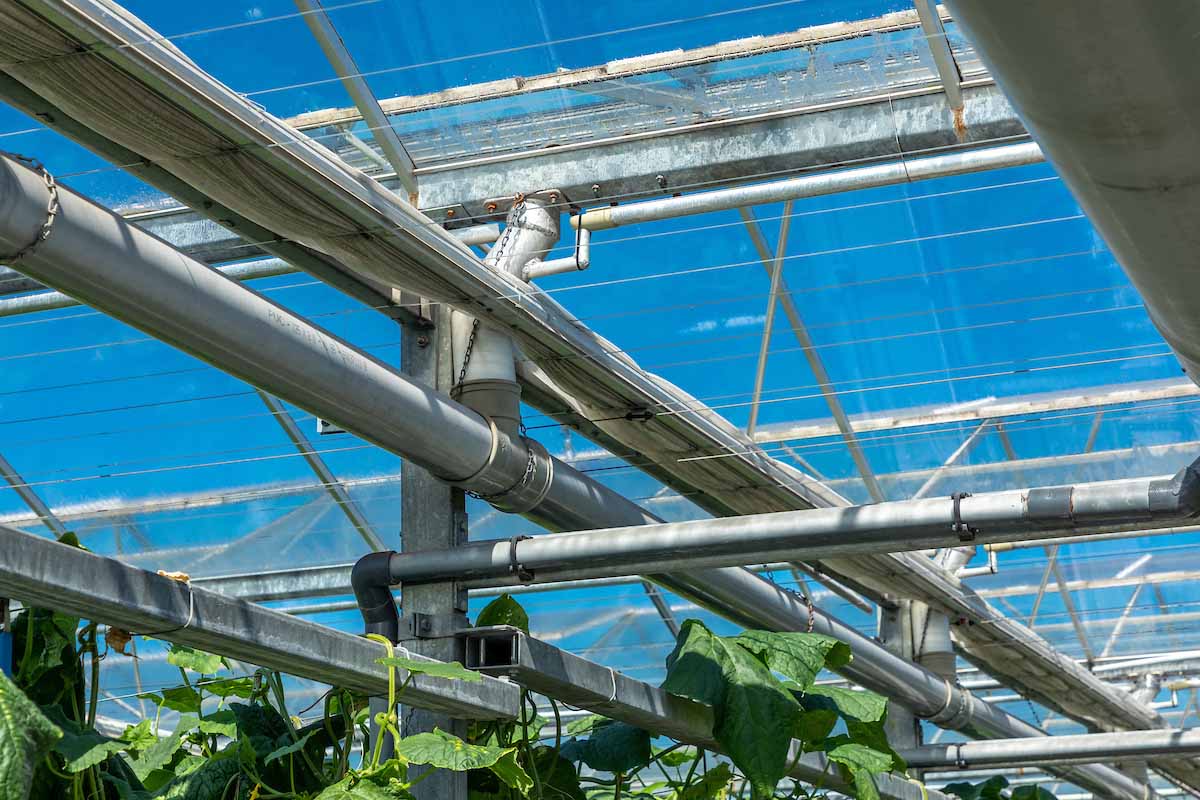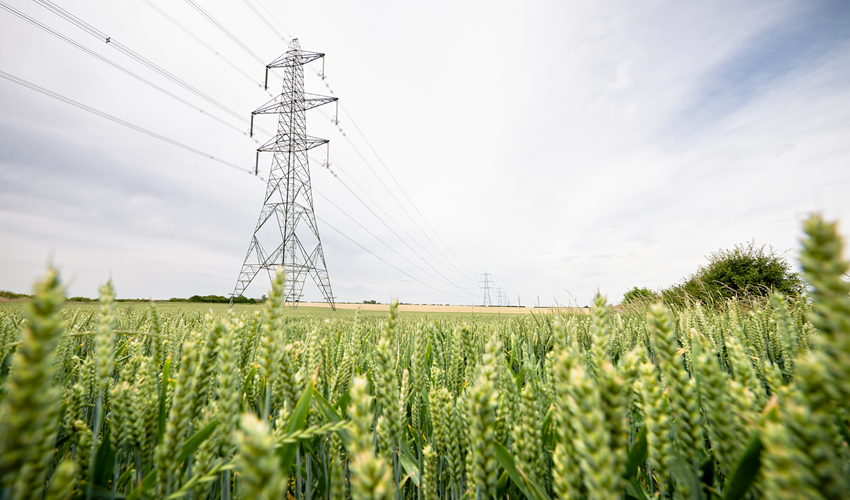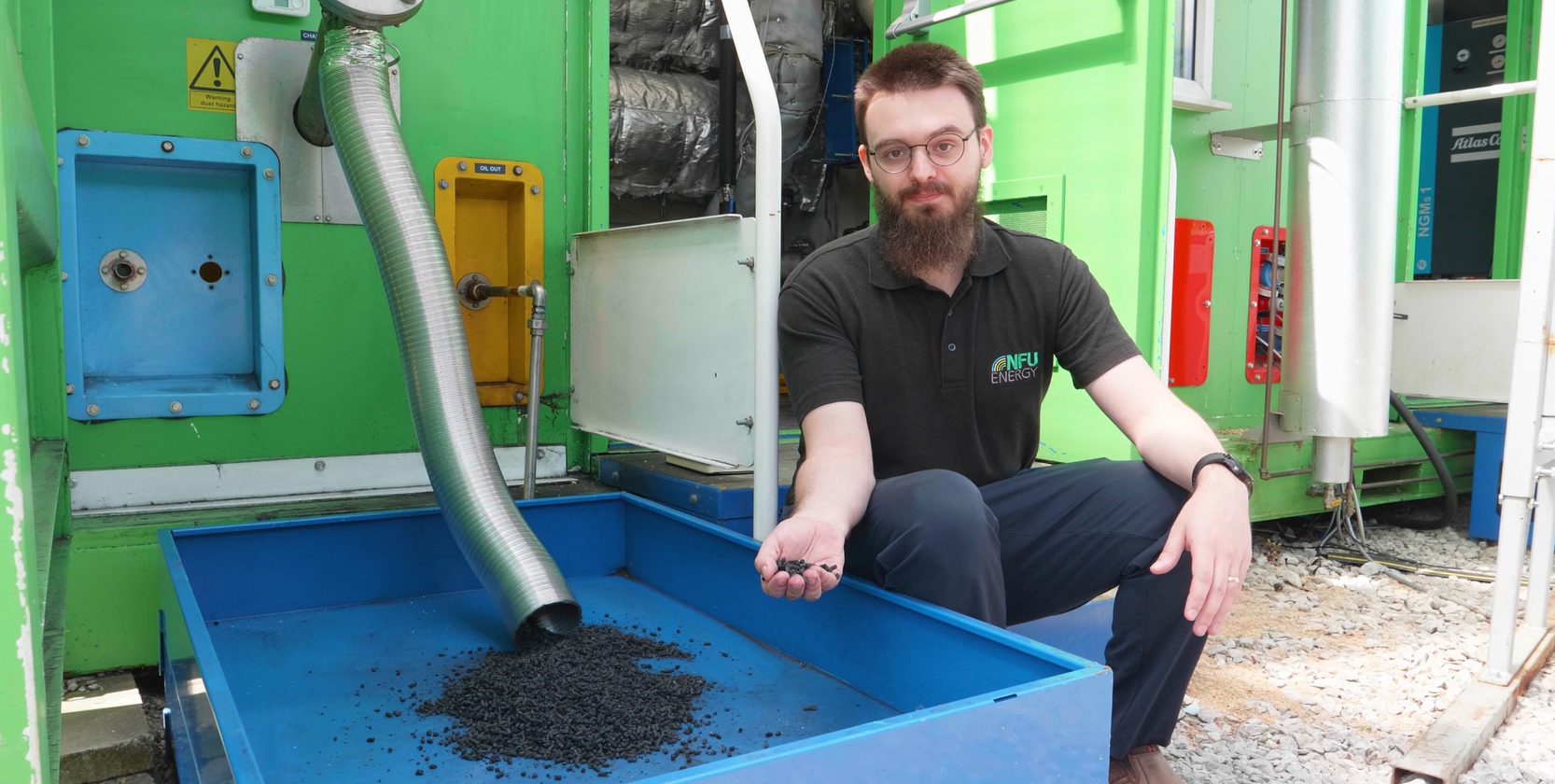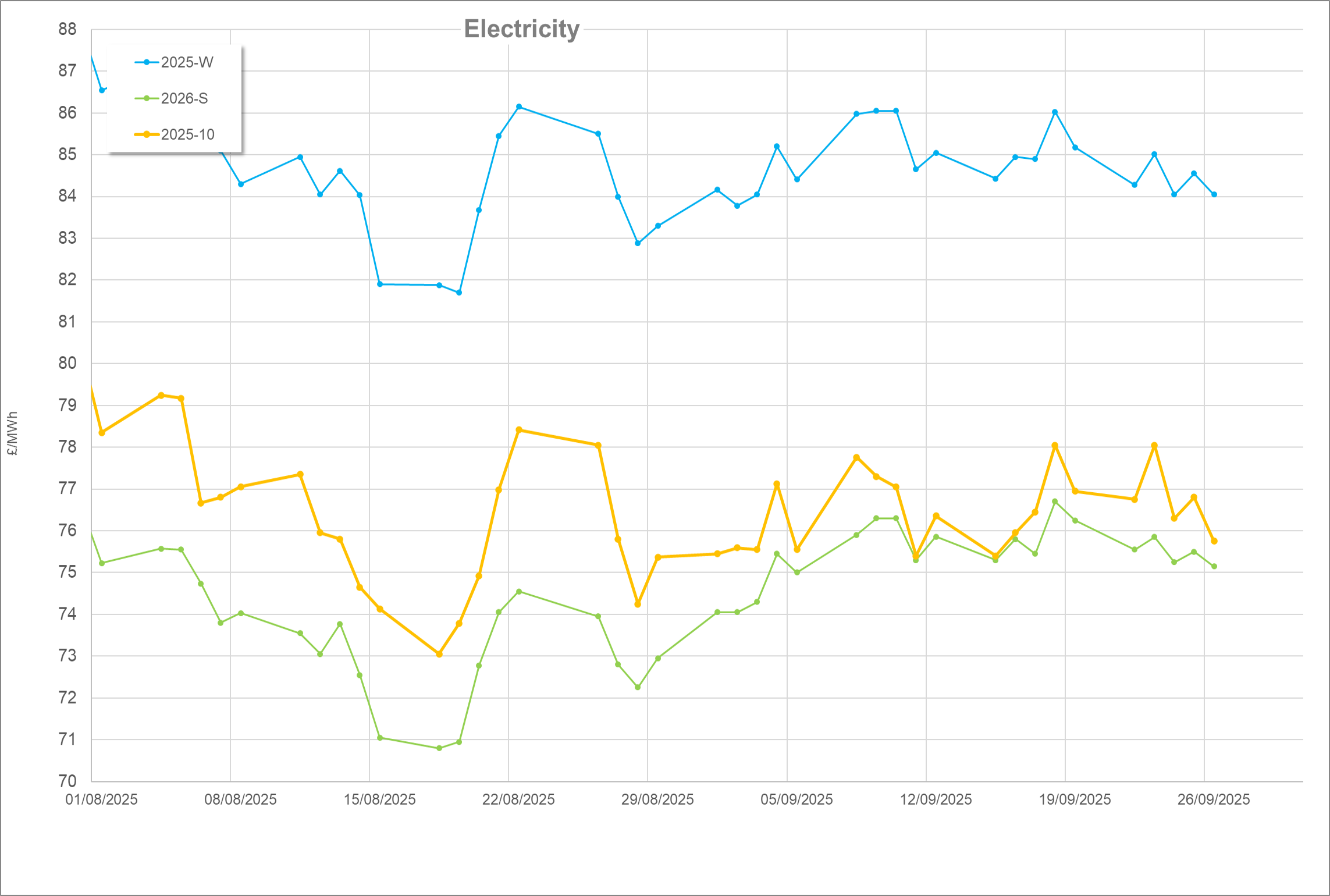First published May 2012
Learn about two of the simpler set points available to manage CO2 enrichment using two contrasting greenhouse scenarios – one taking place on a sunny day and one on a dull day.
Why it’s best not to ‘set and forget’
Two of the simpler set points available to manage CO2 enrichment are:
- Maximum boiler capacity for CO2
- Minimum boiler capacity for CO2
As simple as they may sound, if you ‘set and forget’ there will be times when:
- You could have burned more gas and achieved higher CO2 levels for no extra cost.
- Your heat stores are full by the middle of the afternoon and if you need CO2 you’ll have to run the boilers and dump heat.
We explore the limitations of these set points and how they can be managed.
For simplicity’s sake, we like to ‘set and forget’. But this can lead to wasted energy and/or missed opportunities to achieve higher CO2 levels at no extra cost. Regular adjustment of settings helps to avoid this, particularly during periods of unsettled weather.
Climate computer control graphs set up like those in our scenarios and with the addition of the CO2 level achieved in the greenhouse, will help in highlighting where opportunities exist to optimise CO2 levels and keep energy use to a minimum.
Set point explained
An explanation of how to optimise the heat storage / CO2 production balance.
The aspects that drive the operation of the boiler during times of CO2 demand are the rate of filling of the heat store and the requirement for CO2. The latter is affected by the stage of crop development and the availability of light.
Normally, growers set an optimum profile for how quickly a heat store is allowed to fill through a day. This helps to optimise the heat storage / CO2 production balance.
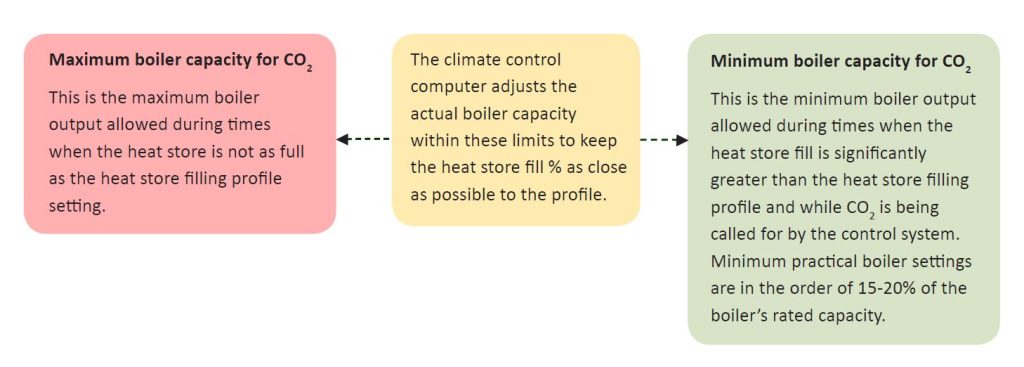
Sunny day scenario
A worked example of what might happen on a sunny day and the options available to maintain CO2 output.
In the sunny day scenario, the heat store is almost empty by sunrise. Up to 08:30 the greenhouse needs heat to help with humidity control so the boiler is able to run at maximum CO2 output with only a limited amount of heat being diverted into the heat store.
Shortly after the heat demand of the greenhouse drops to zero (around 09:00) the boiler output has to be reduced to stop the energy in the heat store becoming greater that that defined in the heat store profile. By 11:00 the boiler is running at the minimum output level allowed, but the heat store continues to fill at a greater rate than the profile requires. Consequently, the heat store is full by 15:30 and no CO2 can be produced for the rest of the day without dumping heat.
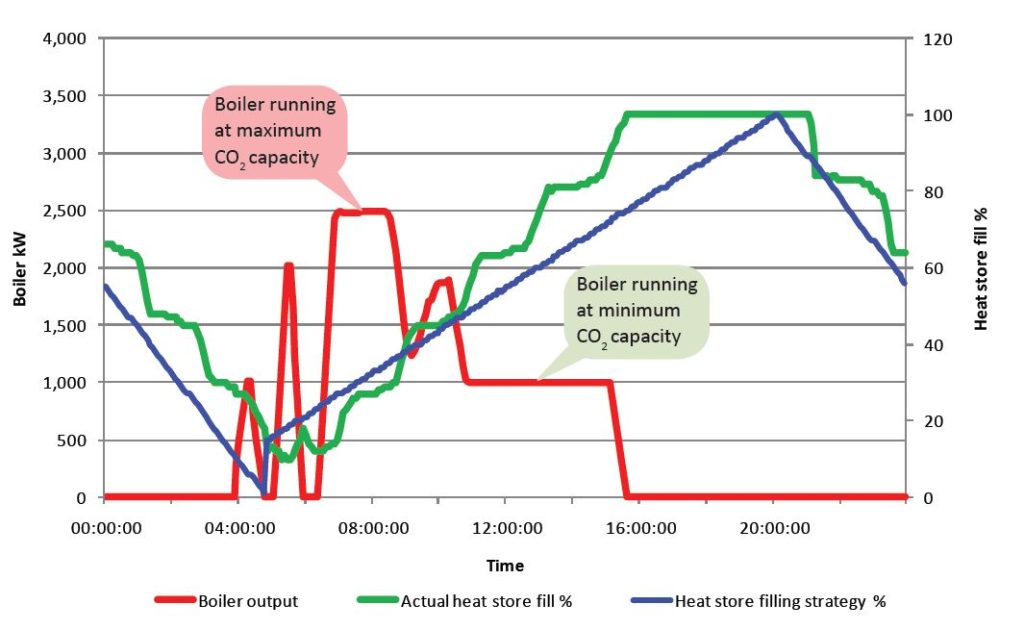
There are a number of options available to maintain CO2 output:
- Heat can be forced into the greenhouse after 15:30 even though it isn’t needed for maintenance of temperature or humidity. In the example of a boiler servicing 1.5Ha and with the boiler running at 1,000kW for a further 4 hours, a gas use of 4,000kWh would result, producing 760kg of CO2 at a cost of around £70.
- Reduce the maximum boiler output – this will reduce the rate of CO2 production in the morning, but extend the use in the afternoon and avoid heat dumping. More even delivery of CO2 throughout the day will generally give better results than use skewed heavily to the morning period.
- Reduce the minimum boiler capacity – if it is not already at the minimum possible. This would spread the CO2 production through the afternoon and delay the time at which the heat store is completely filled.
In practice a combination of the two latter options is likely to give the best result.
Note costs correct as at June 2010.
Dull day scenario
A worked example of what might happen on a dull day, including the opportunity to allow a higher maximum boiler capacity for CO2 enrichment.
In the dull day scenario, heat and venting is required all day to help with humidity control. The venting prevents the target CO2 level being achieved, so the boiler spends most of the time running at the maximum output allowable as determined by the CO2 setting. With most of the heat going into the glasshouse to give humidity control, the heat store is not full at the end of the day.
In this situation it is possible to allow a higher maximum boiler capacity for CO2 enrichment thereby giving higher CO2 levels in the greenhouse without having to destroy heat i.e. for no extra cost. However, if this is to be done, it’s important to check that the CO2 enrichment fans can handle the greater volume of flue gases or the extra CO2 may simply go up the chimney and not in the greenhouse.
